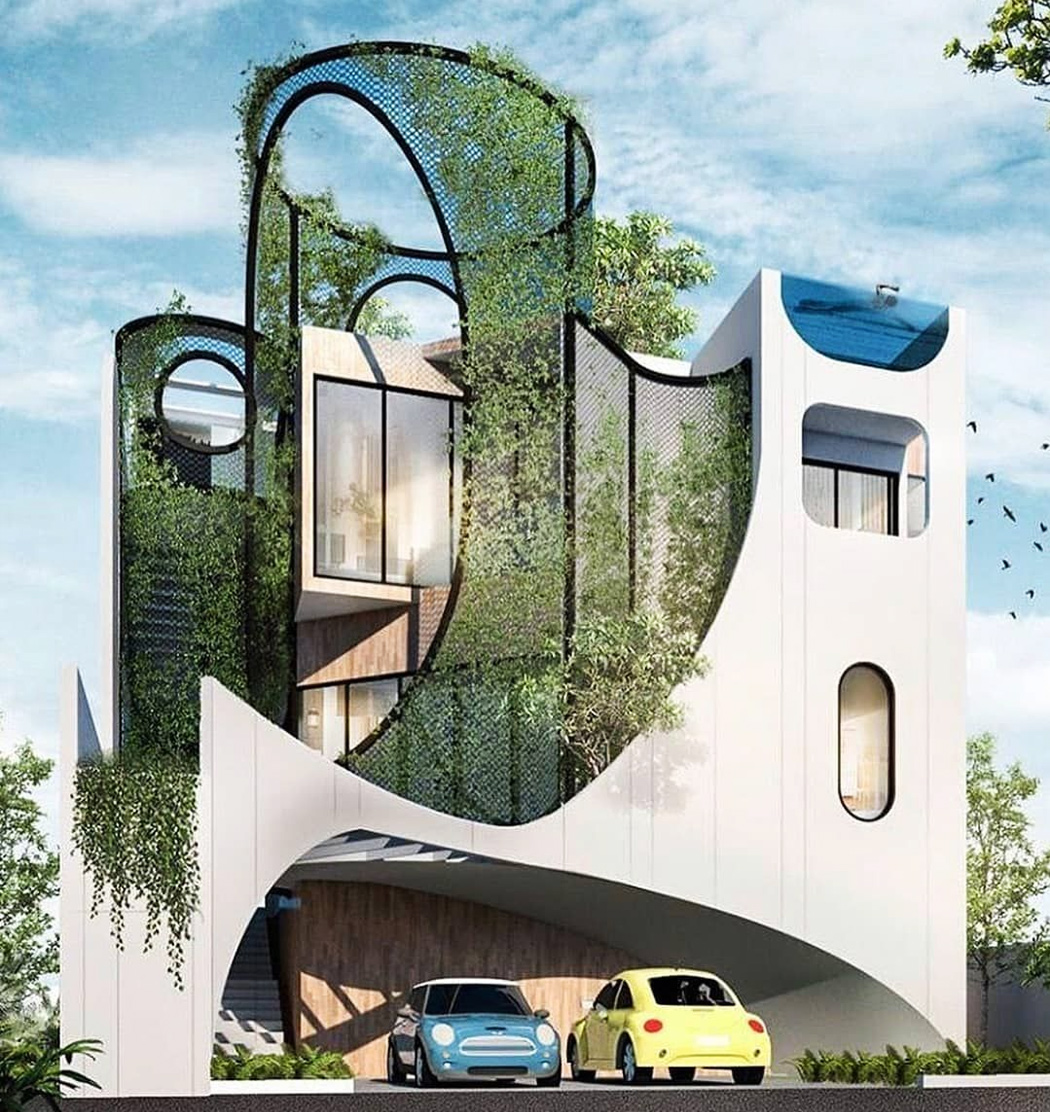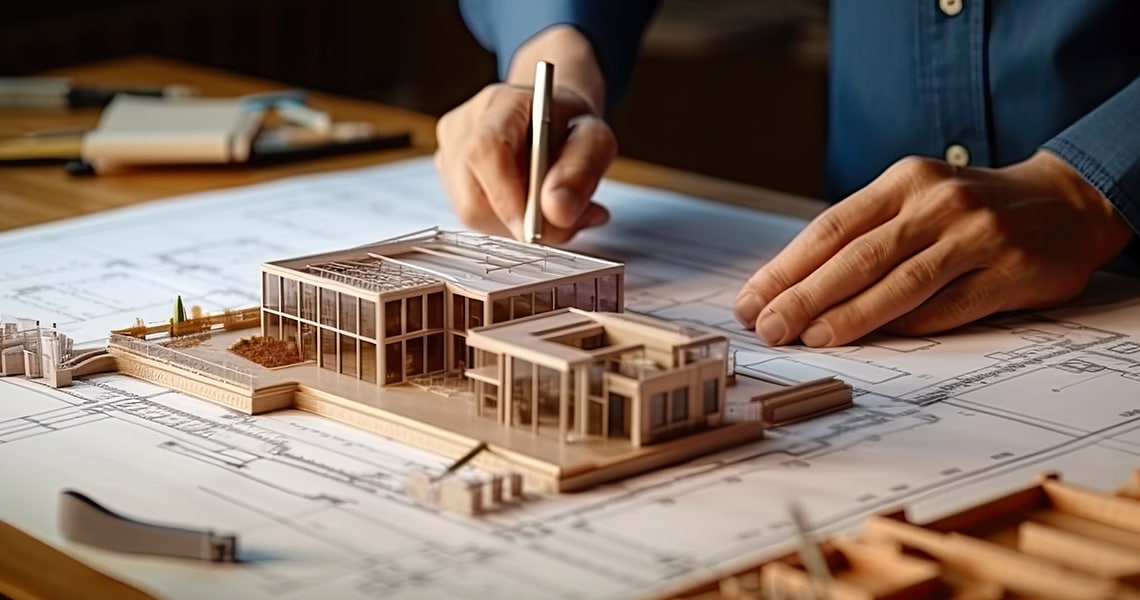Boost Your Building Design with the Expertise of CDA Architects
Boost Your Building Design with the Expertise of CDA Architects
Blog Article
The Effect of Technical Advancements on the Style Practices of Contemporary Architects
The rapid advancement of technological tools has actually substantially reshaped the design landscape for modern designers, promoting unmatched levels of technology and sustainability. The integration of Building Information Modeling (BIM), parametric design, and expert system has not just structured collaboration amongst diverse groups however likewise redefined task execution. Nevertheless, as designers accept these improvements, they are challenged with complex obstacles that can affect their creative procedures. Checking out these characteristics exposes a nuanced interplay in between modern technology and conventional design methods, prompting a closer exam of what the future holds for building methods.
Evolution of Architectural Equipment
Just how have building tools transformed the design and construction processes over the centuries? The development of architectural tools has dramatically affected the effectiveness, precision, and imagination of design and construction.
With the development of the Renaissance, the intro of the compass and the protractor marked a pivotal change. These devices enabled designers to accomplish better accuracy in their designs, facilitating the appearance of more detailed and proportionate buildings. The Industrial Transformation additionally revolutionized building method with the introduction of mechanized tools and products, enabling for bigger and a lot more enthusiastic tasks.
In the 20th century, the growth of computer-aided layout (CAD) software changed the landscape once more, offering engineers with unmatched capabilities in modeling and visualization. Today, advanced devices such as Building Details Modeling (BIM) and parametric style software proceed to press the limits of architectural advancement, allowing a more integrated strategy to design and construction processes.
Enhanced Partnership in Layout
As technology proceeds to advance, improved cooperation in design has actually ended up being a keystone of contemporary architectural method. The combination of digital tools such as Structure Info Modeling (BIM), cloud-based systems, and progressed visualization software program has changed the means engineers, designers, and stakeholders engage throughout the design process. These devices facilitate real-time interaction, enabling teams to share ideas, alterations, and responses immediately, no matter of geographical location.

Additionally, interdisciplinary cooperation has been streamlined with these technological developments, enabling architects to work much more carefully with various other specialists, such as urban planners and environmental consultants. The outcome is a more natural approach to design that takes into consideration various viewpoints and know-how. Ultimately, enhanced cooperation in layout is not simply a pattern; it is vital for producing cutting-edge, functional, and visually pleasing architecture in an increasingly complex globe.

Sustainability Via Modern Technology
Sustainability in architecture has significantly come to be intertwined with technological innovation, driving the market toward ecologically liable practices. Contemporary designers are leveraging advanced modern technologies to minimize environmental effect while enhancing the efficiency of buildings. cda architects. One prominent example is making use of Building Details Modeling (BIM), which enables precise preparation and source allocation, decreasing waste during building and construction and advertising energy effectiveness throughout a building's lifecycle
Furthermore, smart products and energy-efficient systems why not look here are being incorporated into designs to optimize resource usage. Technologies such as solar batteries and eco-friendly roof covering systems harness renewable resource sources, contributing to lowered carbon impacts. In addition, the application of synthetic knowledge in layout processes allows designers to replicate and assess power usage, guiding choices toward even more lasting end results.
The combination of sustainable modern technologies not just lines up with global environmental goals however likewise satisfies an enhancing need from consumers for green remedies. As engineers accept these technologies, the emphasis shifts towards developing spaces that are not only visually pleasing yet additionally functionally sustainable, thereby redefining the standards of modern-day design. In this means, modern technology acts as a catalyst for sustainability, making it possible for designers to design structures that respect and improve the natural surroundings.
Challenges in Implementation
While technological improvements in style hold fantastic promise for improving sustainability, their application commonly experiences considerable obstacles. One key barrier is the high understanding curve related to brand-new innovations. Designers and building professionals might need extensive training to effectively utilize advanced software application and devices, which can delay task timelines and raise costs.
In addition, the integration of arising technologies, such as Building Details Modeling (BIM) and sustainable materials, often necessitates cooperation across multidisciplinary groups. This collaboration can be impeded by distinctions in experience, workflows, and communication styles, causing potential conflicts and ineffectiveness.

Additionally, regulatory frameworks and building regulations might not keep pace Click This Link with technical innovations, creating ambiguity and prospective conformity problems. This challenge can prevent designers from totally embracing brand-new technologies, as the danger of non-compliance might outweigh the advantages. Therefore, addressing these execution obstacles is important for the successful combination of technological improvements in modern architectural techniques.
Future Fads in Design
The obstacles connected with the implementation of brand-new modern technologies in architecture have prompted a reevaluation of future trends within the sector - cda architects. As designers navigate concerns such as sustainability, urbanization, and social equity, they are significantly taking on ingenious innovations to enhance style effectiveness and environmental performance
One prominent fad is the assimilation of artificial intelligence (AI) in the design process. AI devices can assess vast datasets to educate style choices, enhancing both imagination and performance. Likewise, Structure Information Modeling (BIM) proceeds to evolve, enabling real-time cooperation amongst stakeholders and promoting structured job management.
Lasting style techniques are also getting energy, with engineers concentrating on adaptive reuse and regenerative layout concepts that lessen source usage and waste. The unification of smart materials and renewable resource resources will additionally improve the durability of buildings despite climate change.
In addition, the increase article source of parametric style permits more personalized and context-sensitive architectural remedies (cda architects). By harnessing these innovations, engineers are poised to develop constructed settings that not only attend to the instant demands of society yet additionally expect future obstacles, thereby redefining the role of style in an ever-changing world
Final Thought
Technical improvements have dramatically reshaped building layout methods, facilitating enhanced accuracy, collaboration, and sustainability. The integration of devices such as Structure Details Modeling and parametric layout software application, along with expert system and wise materials, equips architects to attend to complicated difficulties much more properly. While application may provide certain barriers, the ongoing evolution of these modern technologies assures to drive development in architecture. Future trends will likely additionally emphasize sustainability and performance, ultimately redefining the built environment.
Report this page